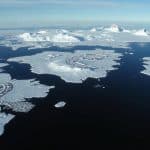Interest in green business is on the rise. Antarctica offers a special opportunity for those wanting to impact positively. This guide highlights how to start a successful business there. It stresses the balance between business and caring for Antarctica’s untouched nature.
Running a business in such a delicate place comes with challenges and chances. It’s crucial for entrepreneurs to protect the environment while achieving their business goals.
The Importance of Sustainability in Antarctica
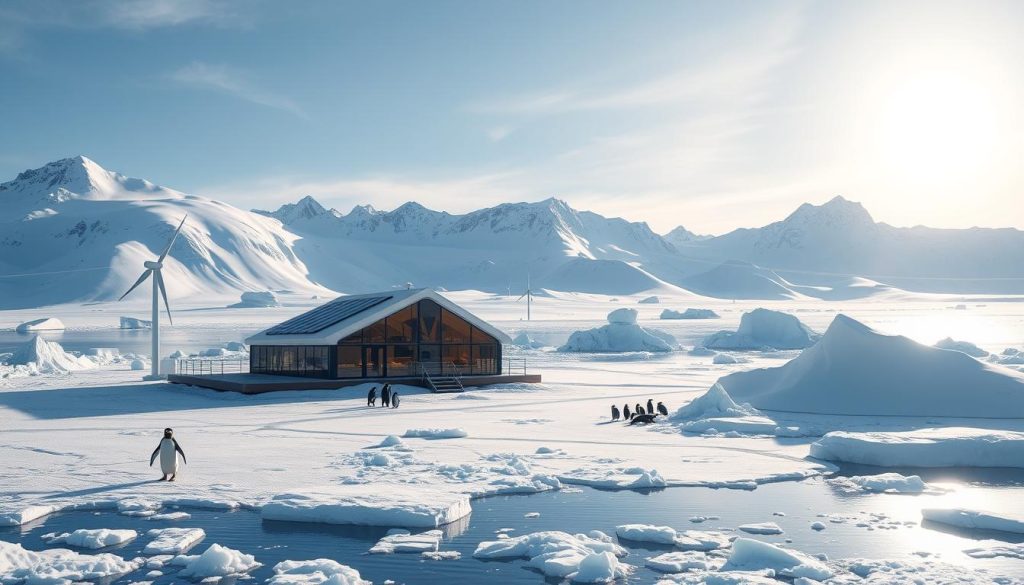
Sustainability is key in Antarctica’s unique environment, which is at risk from climate change. Protecting its fragile ecosystems is crucial for wildlife and research. Without sustainable actions, we could harm the native species’ homes and research quality.
Efforts to conserve Antarctica aim to reduce harm through many approaches. It’s crucial to follow strict rules for responsible practices. The Antarctic Treaty System sets guidelines for sustainable activities, ensuring the region remains balanced.
If we ignore sustainability in Antarctica, the consequences could be grave. More human presence can disturb the wildlife, especially those struggling with climate shifts. This not only puts animals at risk but can also affect important studies needing stable conditions. So, staying committed to sustainability is necessary for conservation’s future.
In conclusion, adopting sustainable methods now is essential. By understanding the value of these practices, businesses can help maintain Antarctica’s health amidst climate change challenges.
Understanding the Antarctic Environment
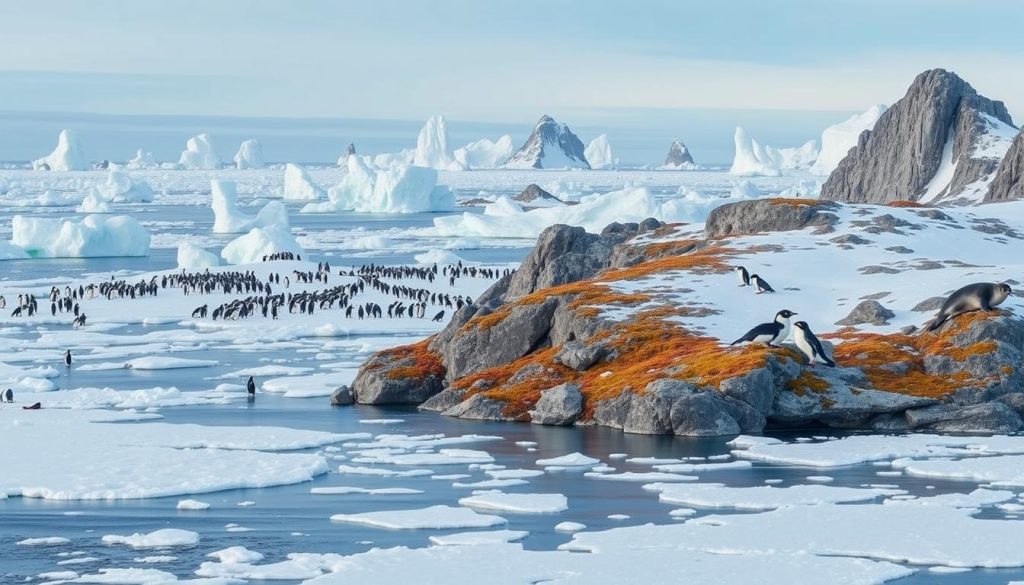
The Antarctic region is fascinating due to its harsh climate, rare ecosystems, and rich biodiversity. It’s one of the coldest areas worldwide, with winter temperatures dropping to -20°C. These conditions largely dictate which animals and plants thrive there.
It’s home to diverse habitats like ice-covered territories, open seas, and glaciers. Remarkable creatures, including emperor penguins and various seals, rely on this icy realm for survival. Knowing the unique aspects of these ecosystems is vital for anyone looking to work in this untouched area.
Before starting any new venture here, it’s important to evaluate the environmental impacts carefully. Antarctica’s biodiversity is delicate; thus, we must consider our activities’ effects on it. Studying climate trends and environmental shifts helps plan sustainable operations that don’t harm this vulnerable habitat.
Understanding Antarctica’s complex climate and ecosystems is key for responsible business planning. Such knowledge ensures we respect and preserve its uniqueness while pursuing our goals.
Regulatory Considerations in Antarctica
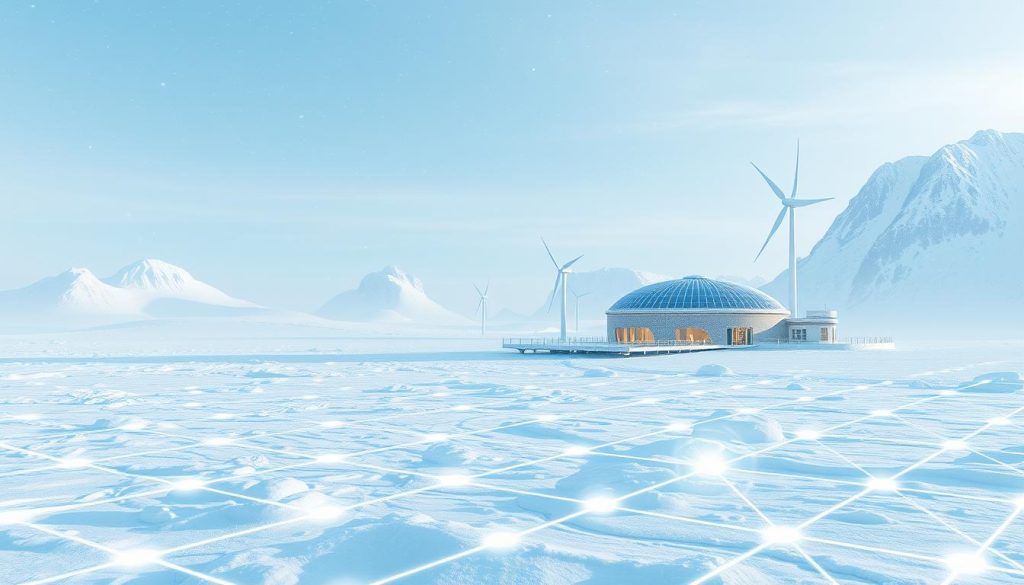
The Antarctic Treaty and related agreements heavily shape Antarctic business rules. These aim to protect the region’s environment while regulating human activities. Entrepreneurs must grasp the permission process before starting.
It’s vital for any venture here to follow strict environmental rules. The Antarctic Treaty sets the legal scene for operations. It’s crucial for businesses to know and follow these rules to reduce environmental harm.
Several authorities both local and global, watch over these regulations. Businesses must work within these rules to maintain standards. Not knowing these rules can cause big problems, including fines or operation bans.
Getting the regulatory framework right is key for staying eco-friendly in Antarctica. Following the Antarctic Treaty and environmental guidelines helps protect this delicate ecosystem.
Setting Up a Sustainable Business in Antarctica
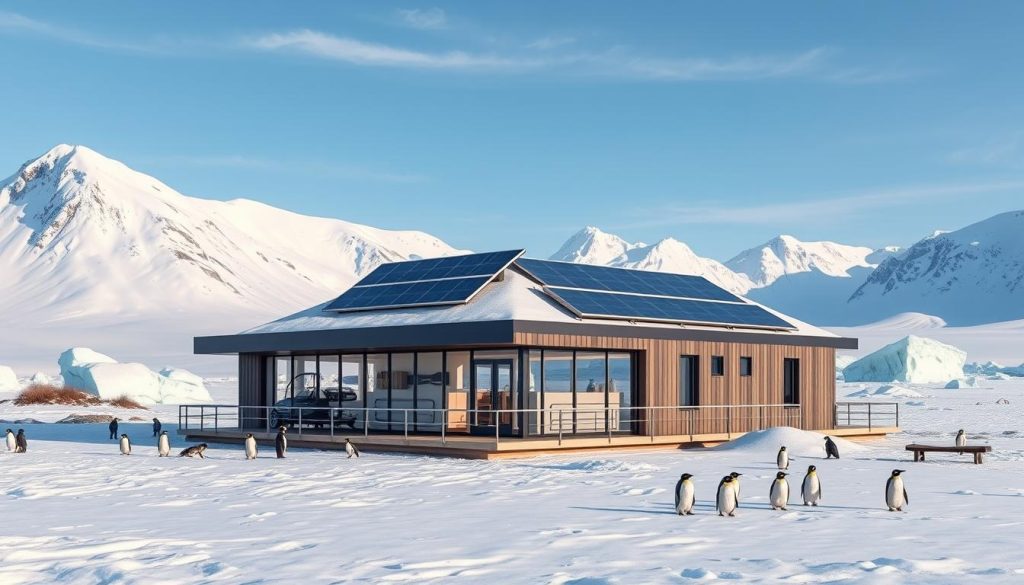
Starting a business in Antarctica means thinking about the planet while making money. It’s important to study the market carefully to find the right opportunities. By choosing sustainable methods from the start, businesses can support the environment and gain respect.
Key Steps in the Business Setup Process
Setting up requires detailed planning. Here are important steps to follow:
- Check if your business idea is a good fit for Antarctica.
- Make a detailed plan that includes how you’ll operate and your environmental goals.
- Look for funding from sources that care about the planet.
- Always consider how your business affects the environment and try to minimize harm.
Types of Sustainable Businesses Suited for Antarctica
There are business ideas that are good for both the company and the environment. These include:
- Eco-tourism, which teaches tourists about wildlife while respecting nature.
- Helping scientific research with logistics or funding.
- Sustainable fishing that follows strict rules to protect sea creatures.
Innovation and eco-friendly ideas are key to doing well in such a distant place.
Funding Your Antarctic Business

Starting a business in Antarctica requires getting the right funding. There are many ways to find this money, like government help or private money. We will look into the financial support that is key for starting and keeping up green projects in this special place.
Grants and Funding Opportunities
Grants for eco projects in Antarctica offer important financial help. Many groups give money for environmental work and research. The British Antarctic Survey and various global eco organisations are prime examples. To get this money, businesses need to submit strong plans. These plans must show how their work helps the Antarctic environment.
Partnerships with Environmental Organisations
Working with eco NGOs can make a business more trustworthy and give it more resources. Forming partnerships leads to support in green efforts. It makes use of the experience and connections of established groups. These efforts can bring more attention and support to your project, maybe even more money for your sustainability work.
Researching Market Needs in Antarctica
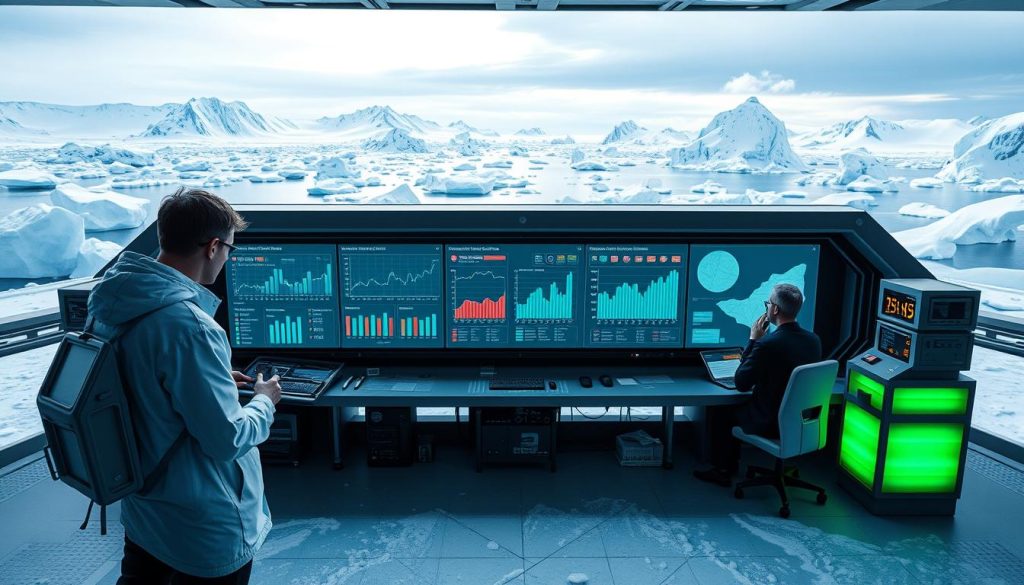
To really understand the Antarctic economy, one must do a deep dive into market analysis. This reveals what people need and what’s missing. Looking into what buyers want shows us where new, eco-friendly businesses can shine. By connecting with locals, scientists, and visitors, businesses can learn about the special ways of life and choices here.
There are several ways to gather this key information, including:
- Surveys and questionnaires aimed at both residents and temporary inhabitants.
- Watching how consumers behave and spotting trends at science bases.
- Working with researchers to look at data about environmental effects and the need for resources.
Finding out exactly what tourists and people living there year-round need leads to smarter business moves. Plus, science is key in discovering new chances for the market. This supports fresh ideas that help the Antarctic economy grow in a good way.
Building a Sustainable Business Model
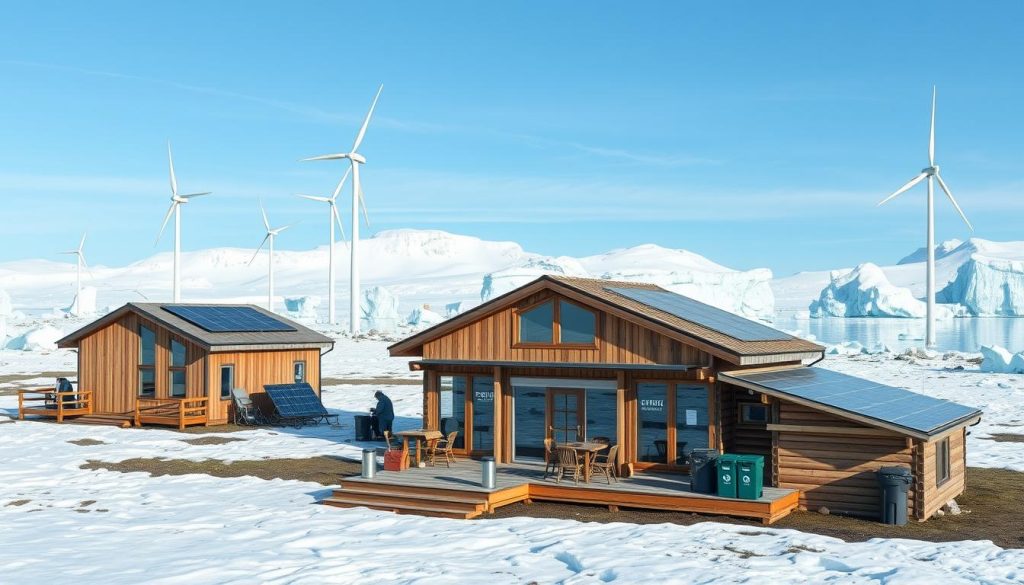
Creating a business that lasts in Antarctica needs a solid base with a focus on sustainability. It should balance environmental care with making money. The main parts of a good business model are:
- Value Proposition: Show how your business helps the Antarctic environment and meets customer needs.
- Cost Structure: Work out the costs of being sustainable and keep quality high.
- Revenue Streams: Look for different ways to make money that keep sustainability at the heart.
Being able to bounce back is key, especially with possible environmental changes. Being flexible helps businesses last longer in Antarctica’s tough conditions. By mixing these parts together, you set up for a strong, lasting business.
Worker Safety and Regulations
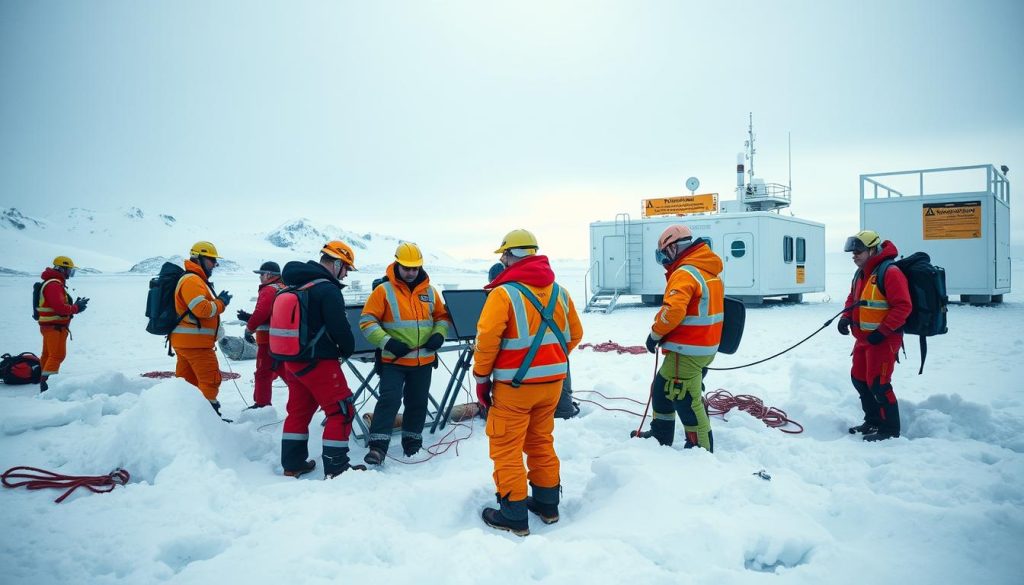
Worker safety in Antarctica brings many challenges due to the harsh climate. It’s crucial to follow strict rules to keep everyone safe. Meeting health and safety standards is vital for everyone’s wellbeing.
Training is key for maintaining safety. Workers need to understand the risks of the Antarctic weather and how to use their equipment safely. This training helps create a culture of safety.
Having the right clothing and equipment is essential for worker safety. Employers must make sure all gear is up to health and safety standards. Regular checks and maintenance of this equipment are also needed to reduce risks.
- Continuous assessment of safety protocols
- Emergency response training
- Implementation of reporting systems for safety incidents
Everyone involved in Antarctic operations shares the duty of keeping the workplace safe. By focusing on health and safety standards, organisations help make work safer for all. In the end, following these rules shows real care for the welfare of every worker.
Securing Necessary Permits and Licences

Operating a business in Antarctica means getting several permits and licenses. This ensures all activities follow strict rules to protect the fragile environment. It is vital for promoting sustainable business practices.
The process to apply for permits includes submitting detailed plans of your Antarctic operations. Companies need to show they care for the environment and follow international agreements, like the Antarctic Treaty System. Getting approval for these permits can take a long time, so it’s wise to apply early.
Key permits often needed are:
- Environmental Impact Assessments to check how activities might affect local wildlife and ecosystems.
- Scientific Research Permits for any work involving gathering data or research.
- Operational Licences for specific activities, like tourism or extracting resources.
Keeping up with rules is key to keeping your permits and licences. You may need to report regularly and follow up with regulatory groups. This shows you’re sticking to the environmental and activity standards.
Innovative Practices for Sustainability
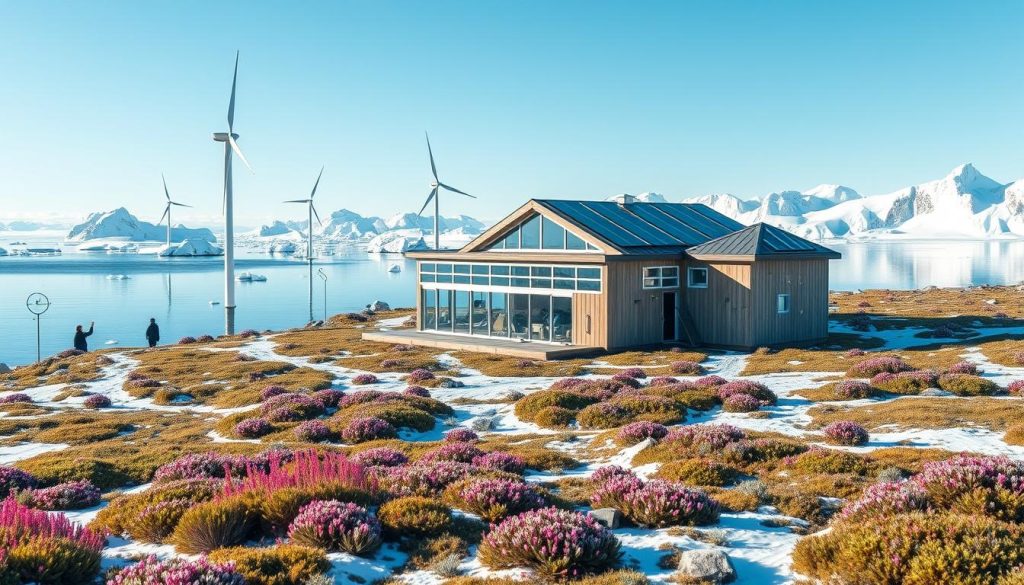
In the pursuit of sustainability in Antarctica, adding new tech is key. Companies can cut down on their impact by using renewable energy and better waste management. These steps help keep a balance between human actions and the untouched Antarctic setting.
Utilising Renewable Energy Sources
For firms in Antarctica, using renewable energy is vital. Relying on old fuels can harm the environment. Solar and wind energy offer a clean, ongoing supply of power. Many businesses have put these solutions to work, showing how innovation can thrive even in remote areas. Solar panels catch sunlight in summer, and wind turbines use the constant breezes, giving energy all year.
Waste Management Solutions
Good waste management is crucial for lessening environmental harm in Antarctica. Companies need strong recycling plans and ways to cut waste to meet rules. Using biodegradable packaging and composting can really reduce how much waste is produced. Also, teaching staff about sustainability helps ensure waste is disposed of responsibly, boosting the operation’s care for the environment.
Developing a Strategic Marketing Plan
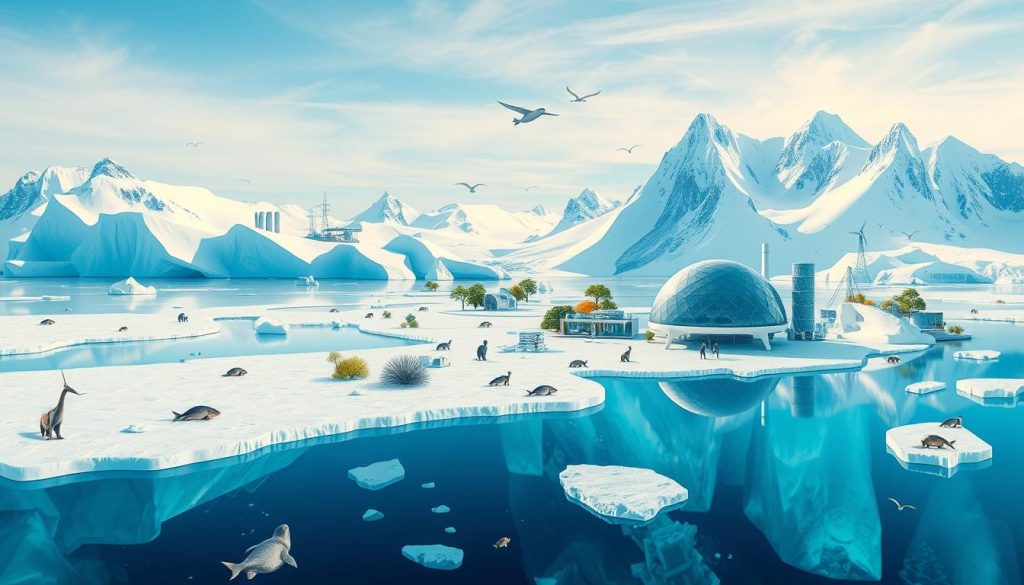
Creating a strong marketing strategy is crucial for any lasting business in Antarctica. This plan must outline ways to be a leader in sustainability. It should use branding to draw in customers who care about the environment. The heart of the plan is knowing who your audience is. This includes both regular consumers and other businesses focused on green practices.
Finding your audience means understanding what they care about. They usually want products and services that don’t harm the planet. So, a powerful brand message about being green can really attract them. This message needs to share how the business uses eco-friendly methods and helps the Antarctic environment.
Using digital marketing tools is key to reaching out far and wide. Social media ads, content marketing, and SEO are good ways to grab potential customers’ attention. Sharing stories about your green journey can make people feel closer to your brand. This builds a stronger relationship and makes them more likely to stick with you.
In short, a well-thought-out marketing plan focuses on strong branding and knowing your audience. This approach helps a sustainable business stand out in Antarctica. It does more than just bring in customers. It also spreads the word about being eco-friendly and the importance of it.
Networking in the Antarctic Business Community

Success in the Antarctic business world hinges on networking. It lets businesses work together, exchange ideas, and create strong bonds with locals. For those daring to launch ventures in this unique region, building these connections is key. It opens doors to valuable resources and know-how, boosting your business’s chances.
Building Relationships with Local Stakeholders
Connecting with local stakeholders is vital for doing well in Antarctica. Good relationships lead to partnership that benefit everyone involved. They help businesses access the knowledge and support needed to overcome the area’s unique challenges.
To improve relationships, try these methods:
- Joining local events to make new contacts.
- Keeping in touch with local organisations and research centres.
- Helping with projects that matter to the community.
- Sharing your knowledge to build trust.
Challenges of Operating in Extreme Conditions
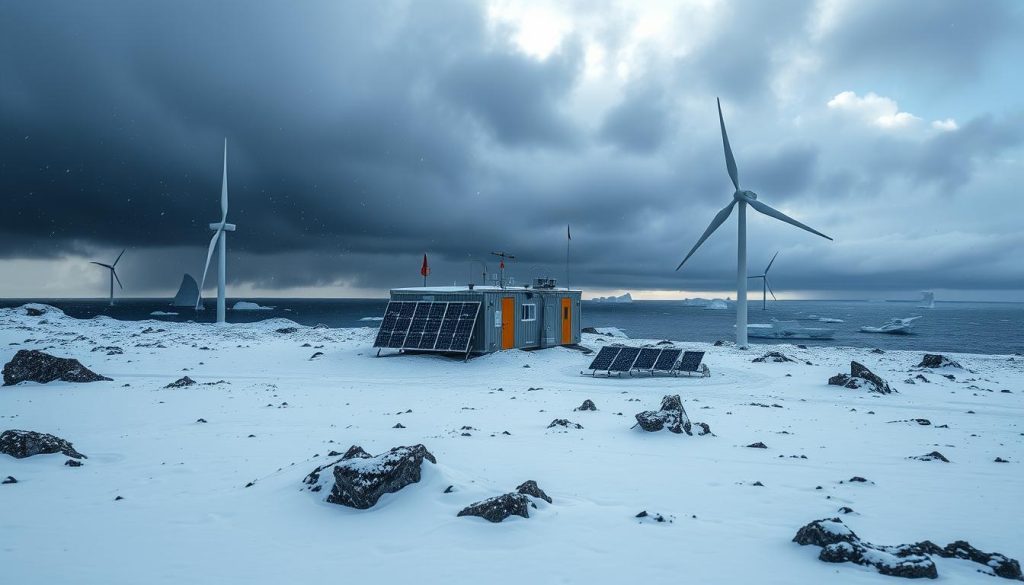
Running a business in Antarctica means working around many tough challenges due to extreme conditions. The freezing environment causes special logistic problems. Companies need clever solutions to keep working well.
Logistical Considerations
Getting goods and staff to Antarctica is very tricky. Businesses have to plan their supply routes very carefully. They deal with problems like hard-to-reach areas, limited local resources, and the need for quick delivery. They use these strategies:
- Establishing reliable partnerships with transport companies specialising in Arctic logistics.
- Utilising advanced inventory management systems to optimise stock levels.
- Implementing contingency plans to manage delays and ensure uninterrupted operations.
Weather-related Challenges
Extreme weather makes running a business there very hard. Companies must be ready for sudden climate changes. This requires good planning and prepping. Some ways to adapt include:
- Regularly monitoring weather forecasts and historical climate data.
- Equipping facilities and transportation with weather-resistant features.
- Training employees on safety protocols specific to harsh weather scenarios.
Long-term Sustainability Goals
Setting long-term goals for sustainability is key for those doing business in Antarctica. These plans should value ecological care and resource use that is responsible, not just profits. With climate change threatening these icy areas, it’s crucial to align objectives with global conservation efforts. This way, companies help fight climate change and support a stronger ecosystem.
Planning ahead is crucial for these green goals. Businesses need to look at how they operate, their supply networks, and dealing with waste, all with sustainability in mind. They should aim for lower carbon emissions, better energy use, and less harm to nature. Checking on progress and adjusting plans ensure these targets stay relevant and possible.
Also, making ongoing improvements matters a lot for lasting success. Working with local folk, scientists, and green groups helps find new, sustainable ways to work. Creating a business culture that values green practices and teamwork helps protect Antarctica for the future. Each company has a role in safeguarding the environment while growing sustainably.







